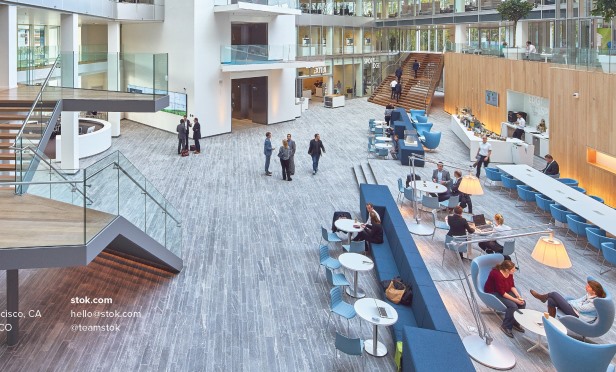 stok's research shows that high-performance buildings benefit the people who occupy them.
stok's research shows that high-performance buildings benefit the people who occupy them.
SAN FRANCISCO—A high-performance building is one that integrates and optimizes all major high-performance building attributes, including energy efficiency, durability, life-cycle performance and occupant productivity, according to the National Institute of Building Sciences. Other factors are enhanced occupant experience and improved health and wellness, along with optimized resource efficiency.
While the business case for high-performance buildings traditionally cites energy savings and increased asset value as the most appealing incentives, another and arguably greater form of enhanced value creation is rarely discussed: high-performance buildings benefit the people who occupy them, which in turn, produces significant positive impacts on a company's bottom line.
stok recently published a white paper outlining the financial case for these buildings. By compiling and analyzing decades of research on more than 100 million square feet of real estate, stok identified a significant financial return in three key occupant impact areas of high-performance buildings: productivity, retention and wellness.
While companies make tremendous investments in employees by way of the design, construction and operation of workspaces, those companies don't often draw the full connection between employees and the space. By applying financial impact calculations to findings from more than 60 research studies on the effects of high-performance buildings, the stok paper arrives at several financial impacts to help owner-occupants and tenants quantify the benefits of investing in high-performance building strategies. The calculations assume a hypothetical company in a 150,000-square-foot building or space, and an average of 183 square feet per person, totaling 820 employees.
Because an initial cost is required to calculate net present value, stok assigns a $20 per square foot cost premium for high-performance buildings. This is a conservative assumption based on an analysis of research on the cost premium for high-performance buildings to date.
Based on the analysis in this paper, by designing for the occupant, owner-occupants and tenants can gain $3,395 per employee in annual profit or $18.56 per square foot in annual profit. This is a net present value of $21,172 per employee or $115 per square foot for 10 years, assuming the conservative $20 per square foot cost premium. This total only includes productivity, retention and wellness findings. If utility and maintenance savings are included, the total net present value of high-performance buildings results in $23,584 per employee or $129 per square foot for 10 years.
To be sure, this approach to high-performance real estate is being demonstrated on a global scale, led by some of the world's most valuable brands. These companies know that to attract and retain top talent, a workplace aligned with the latest scientific research on the built environment's ability to boost occupant wellness is required. These organizations are incorporating wellness strategies like biophilia and connectivity to nature, enhanced ventilation, air quality and temperature controls, and wellness amenities for occupant wellness, health and comfort at a level never seen before, says one of the stok report authors, Jeremy Attema.
“Health and wellness design in the workplace has become a major factor for companies looking to optimize their office space because it's experiential–people can tangibly feel the benefits. Wellness is connected to the entire web of human performance and experience in the office,” Attema tells GlobeSt.com. “Improved wellness measurably makes people more productive, retains employees and enhances occupant health, all of which impacts the bottom line. Whereas utility and maintenance cost savings from sustainable building strategies were previously the only quantified financial benefits of high-performance buildings, stok's report provides a methodology for how to quantify the financial value of occupant impacts such as improved wellness and the numbers are staggering.”
Companies are putting themselves at risk by not optimizing wellness design to provide employees with healthy work environments. In practical use, this report provides owner-occupants, tenants and designers with the financial fundamentals to avoid value engineering wellness designs, instead making design decisions that clearly promote integrated human health and environmental sustainability over short-term gains, Attema concludes.
© Touchpoint Markets, All Rights Reserved. Request academic re-use from www.copyright.com. All other uses, submit a request to [email protected]. For more inforrmation visit Asset & Logo Licensing.







